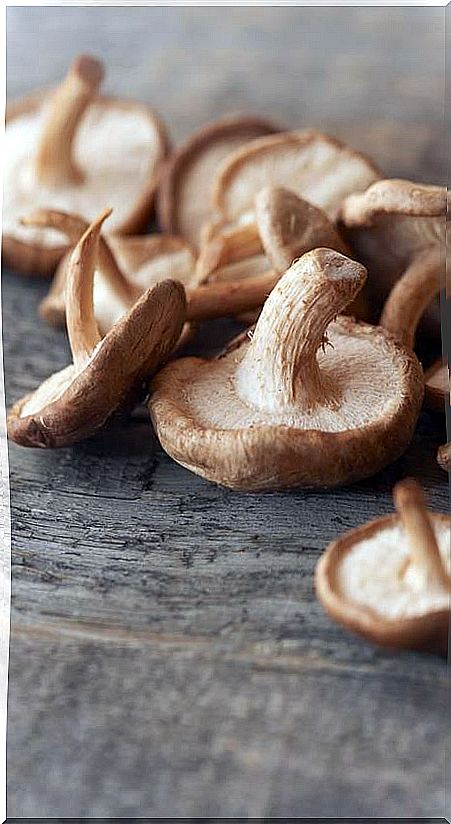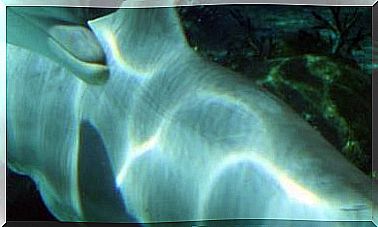Selenium: How To Obtain It And Why It Is Essential For Your Body
Selenium is an extremely important trace element for the body, as it acts to protect against aging and regulates the immune system.

Despite being a trace element, that is to say that its needs are calculated in very small quantities, on the order of micrograms (mcg) or millionths of a gram, the biological role of selenium is essential for health.
Present in foods such as legumes, whole grains, shitake mushrooms and nuts such as Brazil nuts (the rest of plant foods, such as vegetables and fruits, usually contain low values), this mineral acts to protect against aging and regulating the immune system.
Everything you need to know about selenium
1. How much selenium should you take a day?
The amount ranges from 20 mcg for the first three years of life to 55 mcg daily for a healthy adult. In pregnant and lactating women the amounts are somewhat higher. Some authors define the optimal amount as 1 mcg per kilo of weight.
2. What vegetables are richest in selenium?
The presence of selenium in plant foods depends mainly on the richness of the cultivated soils in this mineral. The best documented food source is Brazil nuts: one serving (5 g) provides the daily dose of selenium for a healthy adult.
3. How do you know if you have enough?
To be certain of a correct intake, the value of selenium in plasma or other markers used in clinical biology should be known , since plasma selenium levels respond rapidly to their intake. A varied and balanced diet ensures selenium requirements.
4. What amounts have toxic effects?
The margin between recommended amounts and toxicity is narrow. In a recent report by the European Food Safety Agency, the figure of 300 mcg per day of selenium was established as the tolerable safety value, with no long-term health risks.
5. How is it related to vitamin E?
Vitamin E increases the digestive absorption of selenium and participates in the elimination of products derived from oxidation, so that both present a positive biological collaboration of an ambogenic nature or of mutual protection. Both vitamin E and selenium are antioxidants.
6. Does whole wheat bread provide more selenium?
Cereal grains have a higher concentration of selenium than foods made from refined grains. In the case of bread, the whole wheat variety contains almost twice as much selenium as white bread, which is made from refined flours.
7. What role does it play in cancer prevention?
Although the implication of selenium in the prevention of cancer is documented in numerous studies (its deficiency causes a decrease in antioxidant capacity), there is no unanimity on the usefulness of supplementing at supranutritional doses to prevent neoplastic diseases.
8. How is it related to aging?
In the elderly, the role of selenium resides essentially in its antioxidant function , in its probable involvement in brain functions, in reducing the risk of cognitive impairment, as well as in the structural and functional integrity of the musculature.
9. Where is selenium poor soils?
There are areas with a low presence of selenium (such as Finland, certain arid territories of Australia, New Zealand and some regions of central China) and seleniferous areas, in which the concentrations are much higher. Europe is considered an area of relatively poor selenium soils.
10. With what other substances does it interact?
In addition to collaborating positively with vitamin E, selenium can also interact with other minerals such as arsenic, cadmium, mercury, copper or lead: there are indications that suggest that it contributes to reducing the toxicity of these heavy metals.
Can we be deficient in selenium?
As the human body is not able to synthesize it, its presence depends on the intake of the foods that contain it and, in turn, the selenium in these foods depends on the richness of selenium in the environment in which they have grown. In principle, deficiencies only occur in areas where the main foods come from selenium-poor lands.
In the clinical setting, there is a risk of deficiency in people with severe intestinal diseases, alcoholic or with liver cirrhosis, among others. However, subclinical deficiencies that are difficult to diagnose can occur in cases of very restrictive diets that can present with nonspecific or low intensity signs, such as a greater propensity to infections, general weakness or depigmentation of the hair.
But the main consequences of a selenium deficiency are related to its antioxidant and immunomodulatory functions: it is associated with a greater risk of suffering from infectious diseases since these are more virulent.
A correlation between low selenium intake and cardiovascular disease has also been observed . In relation to cancer, it is known that selenium deficiency decreases the body’s antioxidant capacity, which increases the damage caused by oxidative stress in the genetic material.
However, there is not enough evidence to advise systematically taking selenium supplements in the prevention of the aforementioned diseases.
The question even persists as to whether the low body concentrations found in these processes are a cause or a consequence of them. It is best to maintain eating habits based on variety and balance.









